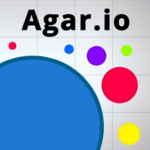Table of Contents
ToggleOverview of Happy Wheels
Imagine yourself hurtling through the air, dodging deadly spikes, mines, and wrecking balls while riding a Segway or a wheelchair. That’s Happy Wheels for you. Released in 2010, this ragdoll physics game takes players on a thrilling ride across bizarre, obstacle-filled courses. The fun lies not just in reaching the finish line but in how wildly and hilariously wrong things can go as you attempt to navigate deadly traps. With characters like the wheelchair-bound Guy, the reckless Dad on a bike, and the quirky Segway Guy, each level is a test of timing, patience, and, of course, a little bit of luck. Expect epic crashes, absurd deaths, and loads of fun as you experience the chaos and challenge this cult classic offers. Buckle up – Happy Wheels is not for the faint-hearted!
Game Background and Development
Initial Release and Developer Details
Happy Wheels made its chaotic debut on June 4, 2010, created by Fancy Force and developer James Bonacci. It quickly became a hit, drawing players into its world of ragdoll physics, where characters would often meet tragic yet hilarious ends. The game’s dark humor and unique gameplay mechanics stood out in a sea of simpler browser games. As players navigated these dangerous obstacle courses, Happy Wheels became one of the earliest games to incorporate ragdoll physics as a core mechanic, setting the stage for many similar games to follow. Its offbeat humor, brutal traps, and surprising gameplay kept players coming back for more, turning it into a cult classic that still attracts fans today.
Platforms and Engine
Available across multiple platforms, Happy Wheels can be played directly in your web browser, or downloaded for mobile devices on both Android and iOS. The game runs on the Box2D physics engine, which is what gives it that satisfying, realistic ragdoll movement. This engine allows characters to tumble, roll, and crash in the most unpredictable ways, making every run through a level feel different. Whether you’re playing on your computer or on the go, the physics are always central to the experience, making each playthrough equally thrilling and frustrating.
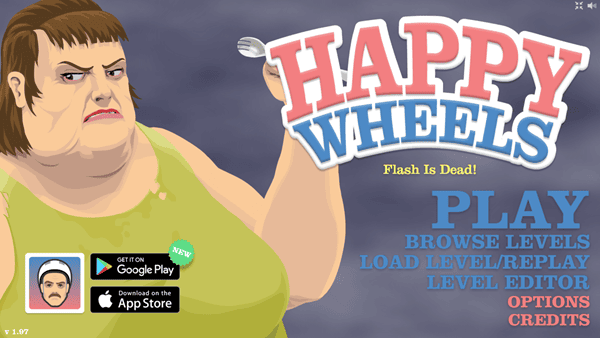
Game Mechanics and Controls
Basic Gameplay and Objective
In Happy Wheels, the goal is simple: navigate through challenging levels filled with deadly traps, all while keeping your character alive. The catch? You control a ragdoll-like figure who has little to no control over their own body. One wrong move, and your character can be torn apart by spikes, crushed by wrecking balls, or impaled by harpoons. As you race to the finish line, every decision counts—whether it’s slowing down to avoid an obstacle or timing your jump just right. Picture yourself gliding across a bridge, only to see a mine explode right where you need to land. It’s moments like this that make the game as thrilling as it is frustrating.
Controls Overview
The controls are simple yet crucial:
- Arrow Keys: Move your character forward, backward, and tilt their body as needed.
- Spacebar: Jump or shoot, depending on the character.
- Ctrl/Shift: Secondary actions, such as rolling forward or backward, can often help you escape tricky situations.
Tips for Effective Control Use
Mastering the controls is key to surviving the chaotic levels. For instance, when using the Irresponsible Dad, it’s essential to use the forward/backward roll to avoid being trapped by obstacles. In some levels, timing your jumps perfectly can mean the difference between crushing defeat and narrowly escaping. The more you play, the better you’ll get at predicting the physics and learning how each character’s unique abilities affect their movement. Don’t rush—take your time to get a feel for the game’s physics.
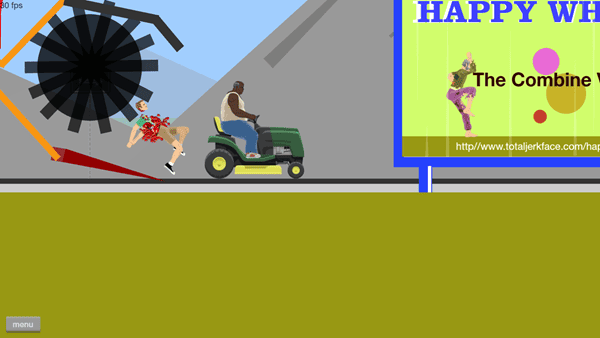
Features and Gameplay Highlights
Character Variety and Special Abilities
One of the standout features of Happy Wheels is its quirky cast of characters, each with their own unique abilities that shape the way you approach the game. You’ll find yourself controlling everything from the wheelchair-bound Guy, whose careful movements can make or break a run, to the Irresponsible Dad, who rides a bike with his child strapped in the back. Each character’s abilities (or lack thereof) bring a fresh challenge to every level. Take Segway Guy, for instance. While his Segway offers a stable ride, he’s not immune to the game’s deadly traps. I’ve often found myself laughing (and groaning) as I tried to navigate his quirky physics, with his body flopping and flipping through the air in the most absurd ways.
Over 60 Levels and User-Generated Content
With over 60 levels to tackle, Happy Wheels keeps you on your toes, offering a diverse range of challenges that test your reflexes, timing, and patience. But what really extends the game’s life is its vibrant community of players. Thanks to the user-generated content, you’ll find an almost endless variety of new levels to play, each with their own unique obstacles. I’ve spent hours exploring some of the more creative levels—ones where I could never predict the next trap or hazard. One moment, you’re soaring through a jump, and the next, you’re crashing into a wall of spikes.
Hazards and Obstacles
The game’s unpredictable obstacles are what make every level feel like a fresh challenge. Spikes that shoot up from the ground, mines that explode with a single touch, and wrecking balls that swing dangerously in your path—these hazards are designed to make your life miserable, but in the best way possible. The satisfaction of surviving a tricky section, only to be sent flying by a perfectly timed harpoon, is part of the game’s charm.
Custom Level Creation and Replayability
The ability to create and share your own levels is where Happy Wheels truly shines. Players have crafted some incredibly complex levels, from deathtraps that look impossible to complete to obstacle courses that require a perfect balance of speed and precision. As a player, it’s exciting to see what the community comes up with, and the best part? You get to make your own levels too. Whether you’re designing a simple challenge or a brutal gauntlet, it’s easy to lose hours building and testing your creations.
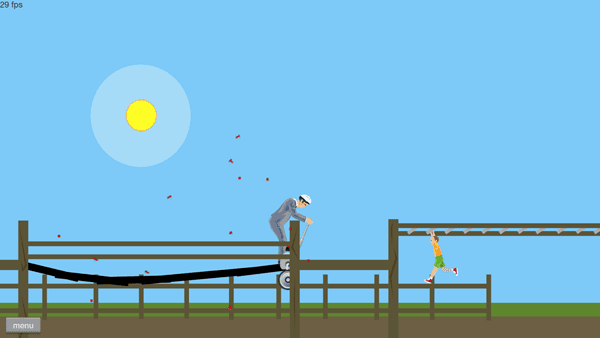
Game Comparison with Similar Titles
Comparison with Geometry Dash
Both Happy Wheels and Geometry Dash are known for their challenging gameplay and demand for perfect timing. However, the two games approach difficulty in very different ways. Geometry Dash is all about rhythm-based gameplay, where players must jump and dodge in sync with the music to clear obstacles. Its precision comes from mastering timing and reaction speed. Happy Wheels, on the other hand, is rooted in ragdoll physics. Instead of precise timing, you’ll be focusing on how the character’s body reacts to the environment—whether it’s flipping through the air or tumbling into a pile of spikes. While both games require skill and patience, Happy Wheels offers a more chaotic, unpredictable experience, where each run feels uniquely different due to the random nature of physics.
Comparison with Flappy Bird
Flappy Bird is a classic example of a simple, one-button challenge, where the goal is to keep the bird flying through pipes without touching them. The simplicity of its mechanics contrasts sharply with Happy Wheels. In Happy Wheels, you manage multiple characters with unique abilities across various obstacle courses, each offering complex challenges. The physics-based nature of Happy Wheels creates a sense of chaos and unpredictability, while Flappy Bird is more about maintaining a steady rhythm. The fun in Happy Wheels comes from experimenting with different characters and dealing with the mayhem they bring, which is a far cry from the relentless simplicity of Flappy Bird.
Comparison with Getting Over It with Bennett Foddy
Both Getting Over It with Bennett Foddy and Happy Wheels are infamous for their frustrating difficulty, but they present that challenge in different ways. Getting Over It involves a unique control scheme focused on climbing a mountain with an axe, and the entire game is about mastering this unconventional control. The frustration is largely about the player’s control over the character’s movements. In Happy Wheels, the difficulty comes from navigating unpredictable obstacle courses while controlling ragdoll characters. The real frustration lies in trying to predict how each character will react to the environment, leading to chaotic and often funny outcomes. While Getting Over It is a slow, methodical climb, Happy Wheels is about fast, wild action. Both games will test your patience, but Happy Wheels adds a layer of humor and creativity with its diverse levels and characters.
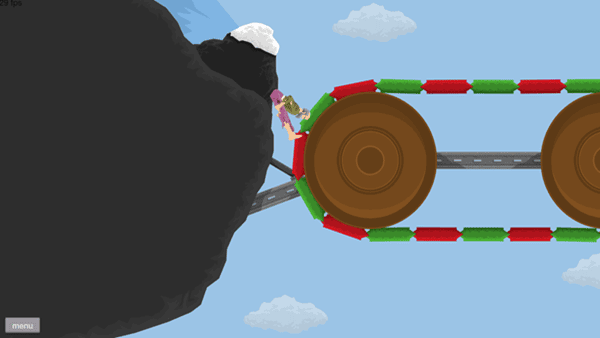
Tips for Playing Happy Wheels
Slow Start for New Levels
When diving into a new level, take it slow. It may be tempting to speed through, but Happy Wheels is all about precision. By easing into each level, you give yourself the chance to understand the layout, anticipate traps, and learn how your character responds to different obstacles. This approach minimizes unnecessary deaths, saving both time and frustration. Trust me—rushing in without fully grasping the environment is often a recipe for disaster.
Importance of Rolling Forward and Backward
One of the most underrated techniques in Happy Wheels is using the rolling action (forward and backward). Many levels throw obstacles at you that require careful navigation, and simply moving forward won’t always cut it. Rolling allows you to adjust your position in mid-air or after a fall, helping you avoid traps like spikes or harpoons. Mastering this move gives you a huge advantage in tight spots, especially when you need a quick reaction to survive a close call.
Don’t Skip Levels or Characters
While Happy Wheels lets you skip levels and characters, doing so isn’t always the best strategy. The game’s early levels, though simple, help you learn key skills, like handling your character’s physics and avoiding beginner traps. By starting from the basics, you build a solid foundation for more complex levels later on. Each character also introduces unique mechanics, so learning them all will give you better control over your gameplay.
Character-Specific Strategies
Each character in Happy Wheels has its own strengths and weaknesses, and the key to success is using their abilities wisely. For instance, when playing as Irresponsible Dad, use his child to your advantage. In levels where you need to hold a button down to trigger an obstacle, detach your child and leave them on the button to keep the obstacle in place while you move past. Understanding each character’s quirks and learning to adapt to them is essential for tackling tougher levels.
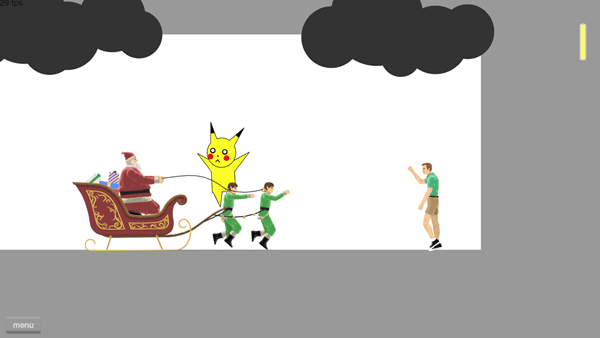
Gamer Comment/Rating
Personal Review as a Gamer
After playing Happy Wheels for a few hours, I can confidently say it stands out in the ragdoll physics genre. The unpredictable physics and dark humor make every level a thrilling, chaotic experience. I’ve lost count of how many times I’ve laughed (and cringed) as my character crashes into spikes or gets flung into a wrecking ball, only to try again with a different character. What keeps me coming back is the sheer variety—the levels, the characters, and the endless user-generated content. Each session feels fresh, and even after hours of gameplay, I’m still discovering new strategies and challenges. The challenge is real, but that’s what makes the victories so sweet. The frustration and satisfaction blend perfectly, offering a unique gaming experience.
Rating: 8/10 – Happy Wheels may have its frustrations, but the chaos, creativity, and replay value make it well worth the time.
Why Happy Wheels Remains Popular
The ragdoll physics in Happy Wheels still offer a unique, chaotic experience that never gets old. Its influence is clear in other physics-based games, shaping the genre. The game’s nostalgic appeal, combined with a dedicated community creating custom levels, keeps it fresh and engaging for both new and returning players.
Conclusion
Happy Wheels remains a fun, chaotic, and endlessly challenging experience. Its unique ragdoll physics, humorous characters, and user-generated levels keep it engaging for players of all skill levels. Whether you’re looking for laughs or a tough challenge, it’s a game that promises excitement with every run.








